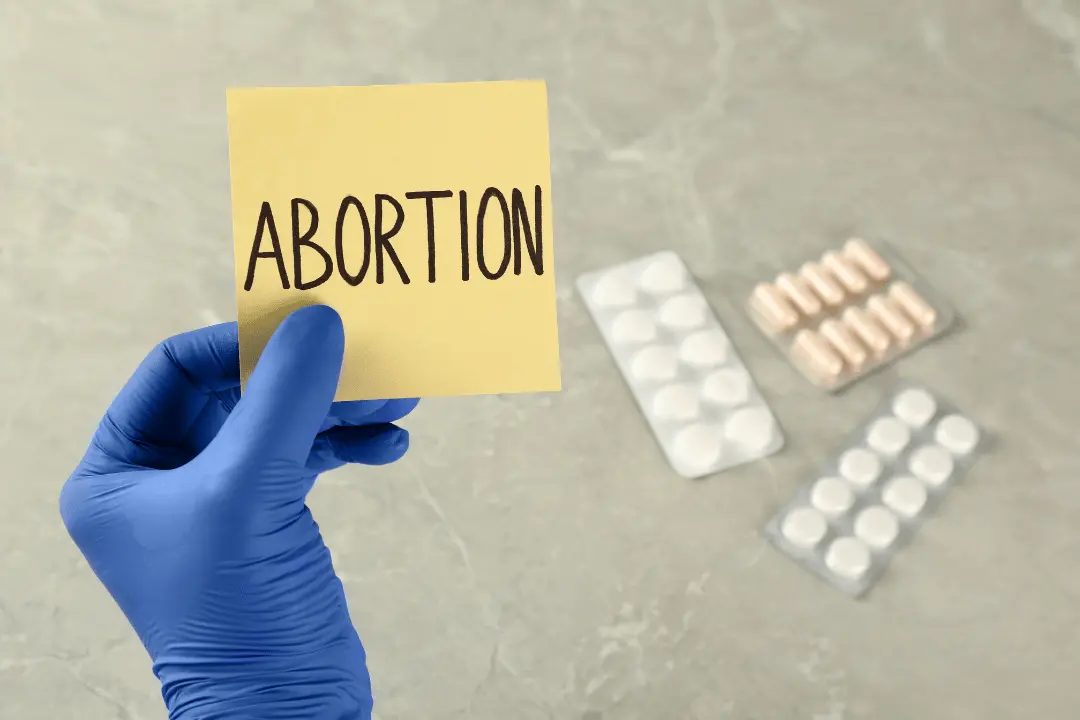
Abortion is a complex and sensitive topic that encompasses a wide range of legal, ethical, and social considerations. From historical milestones to current legislative debates, abortion continues to be a subject of significant public discourse worldwide. Let’s delve into some verified facts and numerical trivia to gain a deeper understanding of the multifaceted issues surrounding abortion.
The World Health Organization (WHO) estimates that approximately 56 million abortions occur worldwide each year. This staggering number highlights the widespread practice of abortion globally and the significant impact it has on reproductive health. It underscores the importance of access to safe and legal abortion services to ensure the well-being of individuals seeking to terminate pregnancies.
The first recorded evidence of induced abortion dates back to ancient Egypt in 1550 BCE. This historical fact showcases the long-standing existence of abortion practices throughout human history. It indicates that the concept of abortion has been present in various cultures and societies for thousands of years, reflecting the complex and nuanced attitudes towards reproductive rights and healthcare.
In the United States, the landmark Supreme Court case Roe v. Wade in 1973 legalized abortion nationwide. This pivotal decision marked a turning point in the reproductive rights movement, granting women the legal right to choose abortion. It solidified the principle of bodily autonomy and sparked ongoing debates and legal battles surrounding abortion laws and access in the United States.
The most common method of abortion in the first trimester is the aspiration method, which involves suction to remove the contents of the uterus. This medical procedure is safe and effective for terminating early pregnancies and is commonly performed in healthcare settings by trained professionals. It illustrates the importance of evidence-based abortion methods to ensure the health and safety of individuals seeking abortion services.
The abortion rate in the United States has been steadily declining since the early 1980s. This trend reflects shifting societal attitudes towards abortion, advancements in contraception methods, and improved access to reproductive healthcare services. It indicates a potential decrease in unintended pregnancies and the impact of comprehensive sex education and family planning initiatives.
In 2019, the state of New York passed the Reproductive Health Act, which expanded access to abortions. This legislative action aimed to protect and uphold reproductive rights for individuals in New York by removing barriers to safe and legal abortion services. It signifies a progressive stance on reproductive healthcare and reflects ongoing efforts to safeguard women’s access to comprehensive reproductive care.
The abortion pill, also known as medication abortion, is a non-surgical method that involves taking two different medications to end a pregnancy. This medical option provides individuals with a safe and effective alternative to surgical abortion procedures, offering greater privacy and convenience. It highlights the importance of expanding access to medication abortion as part of comprehensive reproductive healthcare services.
The Guttmacher Institute reports that approximately 73% of abortions worldwide are obtained by married women. This statistic challenges common misconceptions about who seeks abortion services and underscores the diverse circumstances in which individuals may choose to terminate a pregnancy. It emphasizes the importance of supporting reproductive rights for all individuals, regardless of marital status.
China has one of the highest abortion rates globally, with an estimated 13 million abortions performed annually. This significant number reflects the complex interplay of factors influencing abortion rates in a populous country like China. It underscores the importance of understanding cultural, social, and policy contexts when examining abortion practices on a global scale.
In 2018, Ireland voted to repeal the Eighth Amendment, which had previously banned abortion in almost all circumstances. This historic referendum marked a significant shift in Ireland’s reproductive healthcare policies, granting women the right to access safe and legal abortion services. It symbolizes a progressive step towards ensuring reproductive rights and healthcare for individuals in Ireland.
The World Health Organization states that unsafe abortions are a leading cause of maternal mortality, accounting for approximately 8-11% of all maternal deaths. This statistic highlights the critical impact of unsafe abortion practices on maternal health outcomes worldwide. It underscores the urgent need for access to safe and legal abortion services to prevent unnecessary maternal deaths and complications.
The term “abortion” comes from the Latin word “abortus,” meaning “miscarriage” or “abortion.” This etymological origin sheds light on the historical and linguistic roots of the term “abortion” and its connection to reproductive health and pregnancy outcomes. It reflects the longstanding presence of abortion practices in human societies and the evolution of language around these sensitive topics.
In 2019, Alabama passed a controversial bill that effectively banned nearly all abortions in the state. This restrictive legislation generated widespread debate and scrutiny regarding women’s reproductive rights and access to abortion services in the United States. It exemplifies the ongoing political and legal battles surrounding abortion laws at the state level.
The abortion rate is highest in countries where it is illegal or highly restricted. This correlation underscores the impact of restrictive abortion laws on the prevalence of unsafe abortion practices and maternal health outcomes. It emphasizes the importance of decriminalizing and expanding access to safe and legal abortion services to protect the health and well-being of individuals seeking reproductive care.
The Netherlands was the first country to legalize abortion in 1981. This historical milestone marked a significant advancement in reproductive rights and healthcare policies, setting a precedent for other countries to follow. It demonstrates the Netherlands’ progressive approach to reproductive health and women’s rights.
The majority of abortions worldwide occur in developing countries, where access to contraception may be limited. This statistic highlights the disparities in reproductive healthcare services and resources between developed and developing nations. It underscores the importance of addressing barriers to contraception and safe abortion services in low-resource settings to promote women’s health and well-being.
In 2017, Poland attempted to pass a bill that would have further restricted access to abortion, sparking protests across the country. This legislative proposal ignited public outcry and activism in support of women’s reproductive rights and access to safe abortion services. It exemplifies the ongoing social and political tensions surrounding abortion laws and policies in various countries.
The World Health Organization estimates that approximately 25 million unsafe abortions occur each year. This alarming figure underscores the global public health impact of unsafe abortion practices on maternal mortality and morbidity. It highlights the urgent need for comprehensive reproductive healthcare services and policies to prevent unsafe abortions and protect women’s health.
In 2016, Zika virus outbreaks led to increased demand for abortions in countries affected by the virus due to the risk of severe birth defects. This public health crisis underscored the complex intersections between infectious diseases, reproductive health, and access to abortion services. It illustrates the challenges faced by individuals and healthcare systems in responding to emerging health threats that impact pregnancy outcomes.
The abortion rate in the United States is higher among women in their 20s than in any other age group. This demographic trend reflects the reproductive choices and healthcare needs of individuals in their 20s, highlighting the importance of tailored reproductive health services for different age groups. It underscores the significance of age-specific reproductive healthcare policies and resources to meet the diverse needs of individuals seeking abortion services.
In 2018, Argentina debated a bill to legalize abortion, which was ultimately rejected by the Senate. This legislative process sparked national conversations and activism surrounding women’s reproductive rights and access to safe abortion services in Argentina. It exemplifies the ongoing social and political struggles to address abortion laws and policies in different regions.
The cost of an abortion can vary widely depending on factors such as gestational age and location, with prices ranging from $300 to $3000 in the United States. This financial range highlights the economic barriers that individuals may face when seeking abortion services, underscoring the importance of affordable and accessible reproductive healthcare options for all. It emphasizes the need for policies and programs that ensure equitable access to safe and legal abortion services.
In some countries, such as El Salvador and Nicaragua, abortion is illegal under all circumstances, including cases of rape, incest, or when the woman’s life is at risk. This restrictive legal framework places women’s health and lives in jeopardy by denying access to essential reproductive healthcare services. It underscores the human rights implications of restrictive abortion laws and the urgent need for policy reforms to protect women’s health and autonomy.
In 2017, the Trump administration reinstated and expanded the Mexico City Policy, also known as the Global Gag Rule, which restricts funding for international organizations that provide abortion-related services. This policy decision had significant implications for global reproductive health initiatives and access to comprehensive healthcare services for women around the world. It exemplifies the intersection of political agendas and reproductive rights advocacy on a global scale.
The debate over abortion remains a contentious issue globally, with strong opinions on both sides regarding women’s reproductive rights and fetal rights. This ongoing debate reflects the complex ethical, legal, and social considerations surrounding abortion practices and policies. It underscores the importance of respectful dialogue, evidence-based research, and inclusive policymaking processes to address the diverse perspectives and concerns related to abortion access and reproductive healthcare.
Abortion FAQs:
1. What is an Abortion?
An abortion is a medical procedure that ends a pregnancy. There are two main types:
- Medication abortion: This involves taking medications to end a pregnancy, usually within the first 10-12 weeks.
- In-clinic abortion: This is a surgical procedure performed by a doctor or qualified healthcare provider to remove the pregnancy tissue from the uterus. There are different surgical methods used at varying stages of pregnancy.
2. Why do people choose abortion?
There are many reasons why someone might choose to have an abortion. Some of the most common reasons include:
- Not being ready for parenthood financially or emotionally
- Health concerns for themselves or the fetus
- Relationship problems
- Domestic violence
- Accidental pregnancy
3. Is abortion safe?
Yes, abortion is a safe medical procedure, especially when performed by a qualified healthcare provider. In fact, it is considered safer than childbirth. Serious complications from abortion are very rare.
4. What are the risks associated with abortion?
As with any medical procedure, there are some potential risks associated with abortion. These can vary depending on the type of abortion, the stage of pregnancy, and individual health factors. Common minor side effects include cramping, bleeding, and nausea. Serious complications are extremely uncommon, but it’s important to discuss these with your healthcare provider during a consultation.
5. What happens during a medication abortion?
Medication abortion involves taking two sets of medications. The first medication blocks the hormone progesterone, which is necessary for pregnancy to continue. The second medication causes the uterus to contract and expel the pregnancy tissue. You can expect cramping and bleeding similar to a heavy period.
6. What happens during an in-clinic abortion?
There are different surgical techniques used for in-clinic abortions depending on the stage of pregnancy. Typically, you will receive local anesthesia or light sedation to minimize discomfort. The cervix is dilated, and the pregnancy tissue is removed using suction or surgical instruments.
7. What should I expect after an abortion?
You may experience cramping and bleeding for several days or weeks after an abortion. Your doctor will provide specific instructions on aftercare, including pain management and monitoring for signs of infection.
8. How long does it take to recover from an abortion?
Physical recovery from an abortion is usually quick. Most people can resume normal activities within a day or two. Emotional recovery is a personal experience, and some people may benefit from counseling or support groups.
9. Can I get pregnant again after an abortion?
Yes, you can get pregnant again after an abortion. Ovulation can return within a few weeks, so it’s important to discuss birth control options with your doctor if you don’t want to become pregnant again right away.
10. Where can I get an abortion?
Abortion access varies by location. You can find a healthcare provider who offers abortion services by searching online resources such as Planned Parenthood https://www.plannedparenthood.org/ or by contacting your local health department.
11. What are the legal considerations of abortion?
Abortion laws vary significantly around the world. It’s advisable to research the legal landscape in your area to understand your rights and options.
12. Are there resources available to help me cope emotionally after an abortion?
Yes, there are many resources available to help you cope emotionally after an abortion. You can find support groups online or in your community, or talk to a therapist or counselor.
13. What are some myths about abortion?
There are many myths and misconceptions surrounding abortion. Here are a few of the most common:
- Myth: Abortion is dangerous. (Fact: Abortion is a safe medical procedure.)
- Myth: Abortion will cause infertility. (Fact: Abortion does not cause infertility.)
- Myth: Women who have abortions are selfish. (Fact: There are many reasons why someone might choose to have an abortion, and it’s a personal decision.)
14. How can I learn more about abortion?
You can learn more about abortion from reputable sources such as:
- Planned Parenthood https://www.plannedparenthood.org/
- Guttmacher Institute https://www.guttmacher.org/
- National Network of Abortion Funds https://abortionfunds.org/
Remember, this information is not a substitute for professional medical advice. Always consult with a qualified healthcare provider to discuss your individual circumstances and make the best decision for your health.









